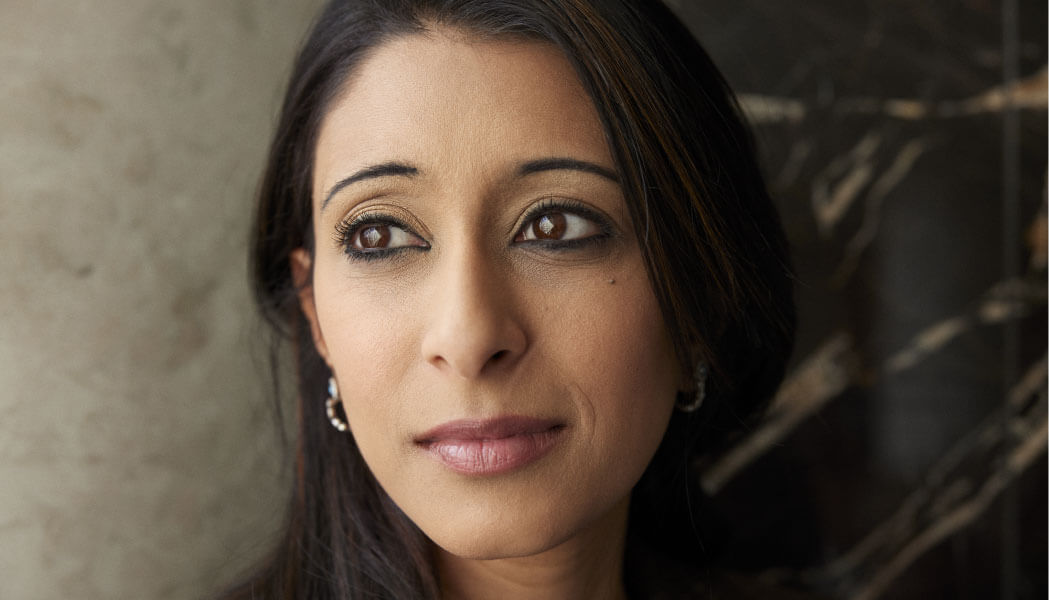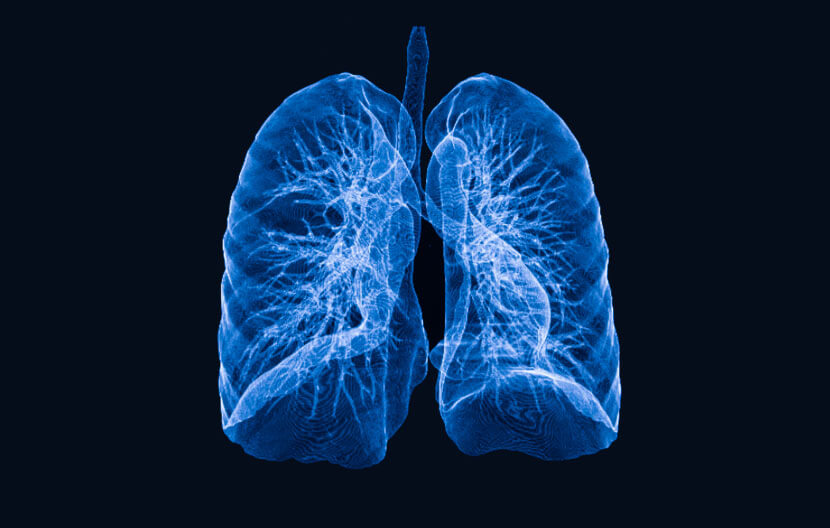
Luck favors the prepared mind.
Leading with a mission to cure lung cancer
Janani Reisenauer, M.D.
Division Chair of Thoracic Surgery and Director of the Innovation Center for the Department of Surgery
Rochester, Minnesota
“Surgery is all about preparation. You put in the time and effort to give each patient your best.”
“Luck favors the prepared mind,” says Dr. Janani Reisenauer, describing her philosophy. And you will find no one more prepared in the fight against lung cancer than Dr. Reisenauer. “Surgery,” she explains, “is all about preparation. You put in the time and effort to give each patient your best.”

When it comes to surgery, Dr. Reisenauer finds herself in a unique position. She’s one of a handful of people certified in both thoracic surgery and interventional pulmonology. Which allows her to visualize the context of a patient’s course of illness from start to finish. “Tremendous opportunities open up if you can see the illness from both sides of the drapes,” she says. Her training enables her to discuss advanced treatments such as immunotherapies, chemotherapies, targeted therapies, and even using genetic components as treatments for lung cancer. “Having that dual certification empowers me to drive that innovation and discover exciting new opportunities coming down the pipeline,” she adds.


One of the innovations is being the first thoracic surgeon to utilize robotic bronchoscopy in the United States. This relatively new piece of equipment allows Dr. Reisenauer to reach a previously inaccessible nodule within the lung and immediately identify it. This minimally invasive procedure helps establish an accurate diagnosis and detect specific genetic mutations in certain tumors, allowing for even more precise treatment.
If that nodule is malignant, Dr. Reisenauer can now perform surgery to remove it, all during the same procedure, and under the same anesthetic. Dr. Reisenauer calls this “single anesthetic lung surgery pathway,” and it means fewer trips to the hospital, less time away from family, and shorter recovery times. “To me, innovation is making a difference without burdening the people it’s benefitting,” she says.



And it’s only the beginning. Dr. Reisenauer is currently involved in a clinical trial to evaluate the role of the robotic bronchoscope in not only identifying potential cancers but treating them as well. As an outpatient procedure, it may eliminate the need for surgery altogether. “We’re getting to the point where the best option may not necessarily be surgical,” she says. “Maybe the treatment is delivered through the robotic bronchoscope. I’m excited about our research in that regard.”
Another way Dr. Reisenauer provides the very best patient care is by being conscientious of their time, so, when possible, coordinating appointments into one day. “We understand it’s hard for people to take time away from their family and work to come to Rochester, Minnesota, to get their lung nodule evaluated,” she explains.

“The drawings allow me to condense everything into a single piece of paper they can take home and then translate to family members.”
She also realizes “Once you’ve met multiple specialists, you’re walking away with an enormous amount of information, often causing your head to spin.” So, Dr. Reisenauer draws a picture for her patients to help them visualize the nodule’s location, the implications of the testing, and the next steps. “The drawings allow me to condense everything into a single piece of paper they can take home and then translate to family members,” she says. Adding, “It allows my patients, especially those without a medical background, to visualize what we’re talking about. As they say, a picture is worth a thousand words.”

Dr. Reisenauer explains why extraordinary breakthroughs are not unusual at the Mayo Clinic, “We are lucky that we have creative liberty and the time to think and iterate and innovate and ideate about what the next level of patient care looks like,” she says. And she loves being part of a world-class team, “It’s fun to empower people’s creativity and provide them the opportunity to feel they’re making a difference. Sometimes it’s more rewarding to help somebody else innovate than to even innovate yourself.”

Born in London, she moved to the United States when she was eight. She spent her childhood in the South before coming to Rochester for surgical training. Initially thinking she would become a pediatrician, she realized during rotations that, “Personalities do match professions,” she says. The way she describes it, she didn’t choose thoracic surgery — thoracic surgery chose her. “Thoracic operations are elegant, sophisticated, and so complex. I was really drawn to that.”
“I want to see results immediately. And the beautiful thing about surgery is the day before the person had cancer; the day after, they don’t. That spoke to me. My personality fits high-pressure environments. I do better when challenged in terms of time management and efficiency. It’s a challenge that I embrace, and I welcome,” she says.
“There’s something magical and beautiful about working in the No. 1 hospital in the world where everyone, from our world-renowned physicians to the environmental service technicians who clean the rooms, are all there for the patient.”

Dr. Reisenauer is now heading into her fourteenth year at Mayo Clinic. “There’s something magical and beautiful about working in the No. 1 hospital in the world where everyone, from our world-renowned physicians to the environmental service technicians who clean the rooms, are all there for the patient,” she says. “Once you’ve been immersed in that, it’s hard to imagine anything better.” Although,” she adds with a smile, “winters are not getting any warmer.”
Long term, Dr. Reisenauer dreams of a day when we can cure lung cancer without operating on a patient. “That’s not very good for job security,” she says jokingly, “but maybe healthcare will evolve to the point where we don’t have to do things that require a tremendous amount of time off work and time healing, and we can reduce the pain and suffering for that patient. Maybe there’s a way to cure cancer where we don’t have to worry about it coming back in five years or ten years from now. Those are tremendous advancements that I hope we make in the future.”
In the meantime, she’s satisfied with the path fate chose for her to follow. “When I’m rounding on a patient, and they’re dressed in their street clothes, they’ve got their bags packed, they’re ready to go home, and their treatment is complete, there’s a tremendous amount of fulfillment in that,” she says, before getting up and leaving. Off on her quest to make lung cancer a thing of the past.
Janani Reisenauer, M.D.
Dr. Janani Reisenauer, is the Division Chair of Thoracic Surgery and Director of the Innovation Center for the Department of Surgery at Mayo Clinic in Rochester, Minnesota. She has been with Mayo Clinic since finishing her fellowship at the Mayo Clinic School of Graduate Medical Education in 2018. Dr. Reisenauer was the world’s first dual fellowship-trained and board-certified interventional pulmonologist and thoracic surgeon and remains one of very few people to achieve both certifications.


Interventional pulmonology
People with serious and complex medical challenges related to the lungs and breathing find the answers they need from our pulmonary specialists.

Thoracic surgery
Surgery involving the organs of the chest, including the esophagus, trachea, and the chest wall (rib cage and breastbone).

Lung Cancer Program
If you have lung cancer, mesothelioma, thymoma or another cancer within the chest, you'll find exactly the care you need at Mayo Clinic.
Meet the physicians leading the defining moments of discovery.
The innovations that change the very definition of possible are happening right now — right here — at Mayo Clinic. Get to know the physicians and dedicated teams of people who are working to heal the once impossible with every medical breakthrough.

Dr. Burchill
Dr. Burchill and his team are advancing diagnostics and treatment for congenital heart disease.

Dr. Larson
Dr. A. Noelle Larson and her team are leading the way for safe,innovative new treatments for patients with scoliosis and other pediatric orthopedic conditions-like non-fusion scoliosis treatment and vertebral body tethering.

Dr. Jaroszewski
Dr. Jaroszewski and her team's surgery allows pectus excavatum patients to (finally) breathe easy.